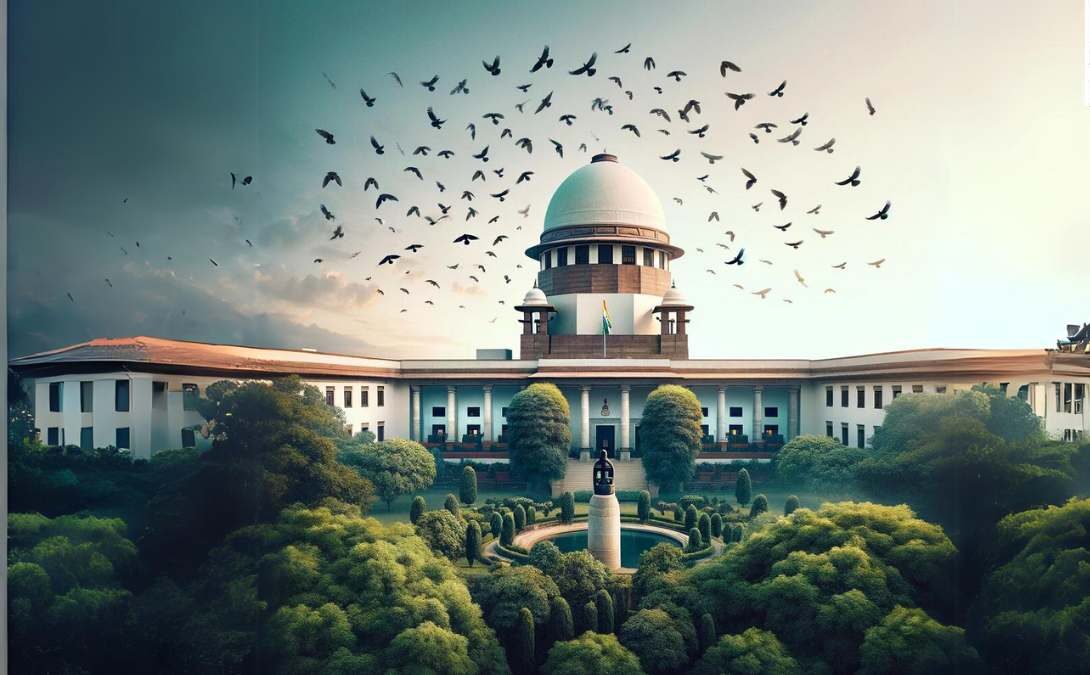


The Supreme Court in the case Re-Inhuman Conditions In 1382 Prisons v. Director General of Prisons and Correctional Services and Ors., observed wherein the public interest litigation is initiated to address the issue of overcrowding of prisons in India.
The Supreme Court in the case observed and has directed the States or Union Territories to constitute District-level Committees, which shall assess and report on available infrastructure in jails and give a decision on the number of additional jails required in terms of the Model Prison Manual, 2016.
The bench comprising of Justice Hima Kohli and Justice A Amanullah in its order stated that the governments of the States or UTs shall notify constitution of the Committees within the period of1 week which being from the date of receipt of the court’s order and the Committees shall hold their first meeting within 2 weeks of their constitution of India.
Therefore, the said committee will consist of the Principal or District judge, the Chairperson of the District Legal Services Authority, Member Secretary, DLSA, District Magistrate (in-charge of the particular District), Superintendent of Police, and Superintendent(s) of Jails.
Further, the court in the case directed the Committees to initiate the steps to examine the requirement of expanding the existing jails and acquiring land to set up new jails within the districts depending on current capacity, occupancy and the future demands of the Districts, wherein they are permitted to examine the needs of respective Districts, with the future projections factoring in a period of at least 50 years for implementation.
Adding to it, the court stated that the Committees will also take into account the status of the ongoing projects or proposals that are pending within the Departments to ensure that milestones are set for completing the ongoing projects and wherever a project has to take off for want of land, thus, the steps needs to be taken to identify the land for purposes of acquisition, and place a report before the Chief Secretary for obtaining necessary approvals and fast-tracking the process.
The court in the case observed and stipulated that the Committees shall keep in mind the requirement of AI and the institution of video-conferencing towards mulakat.
The court then asked the States/UTs to furnish details of their respective territories on the
(i) number of jails presently setup,
(ii) sanctioned capacity and actual capacity of the jails,
(iii) current requirement to set up more jails and the steps initiated and
(iv) stage at which such plans were for setting up more jails.
The counsel, Advocate Gaurav Agrawal, appearing as Amicus Curiae in the said matter, was asked to collate the data and place it before the court in tabulated form.
Before the Court, Amicus placed a compilation while relaying data of existing jails in the States or UTs and the responses of the States or UTs with regards steps initiated to setup more jails.
The bench noted that there was hardly any proposal that had come forth from the States of Bihar, Rajasthan, Karnataka and Madhya Pradesh.
The court while anguished by the non-compliance of the last order imposed the cost for an amount of Rs.10,000 each on States of Maharashtra and Jharkhand.
The court stated that the information has been furnished collectively instead of giving a breakdown of the capacity/occupancy of the jails which makes it difficult for this court to assess the extent of occupancy on a jail-wide scale.
It has also been stated in some cases by the State government that work is under progress for constructing more jails without giving the details regarding state of the said progress, which is of no use.
The said bench remarked that the figures presented were stark and needed to be addressed on top priority.
Facts of the Case:
The former CJI RC Lahoti wrote a letter to the then CJI relating to the disturbing conditions in prisons on June 13, 2013 wherein he invited attention to the inhuman conditions prevailing in 1382 prisons in India as reflected in a Graphic Story appearing in Dainik Bhaskar (National Edition) on March 24, 2013.
Therefore, the letter was registered as a PIL, wherein the Social Justice Bench passed an order requiring the Union of India to furnish certain information primarily relating to the more serious issue of over-crowding in prisons and improving the living conditions of prisoners on July 05, 2013.
The Social Justice bench in February 26 issued extensive guid guidelines on prison reforms, intending that they would prison population and enhance living conditions of prisoners.
The said court brough to the notice of the court that the problem of overcrowding in jails, which encompassed issues of hygiene, management, sanitation, etc., continued to persist and had rather become pathetic. Some States/UTs suffered with overcrowding of jails to the extent of 150 percent or more.
The bench in the case observed and has directed States or UTs to prepare Action Plans for reducing prison population.
In 2018, it asked States or UTs to consider the feasibility of establishing open prisons in as many locations as possible and this court expect the State Governments concerned to not only try and utilize the existing capacity of these open prisons and if necessary, increase the existing capacity of these open prisons in due course of time.